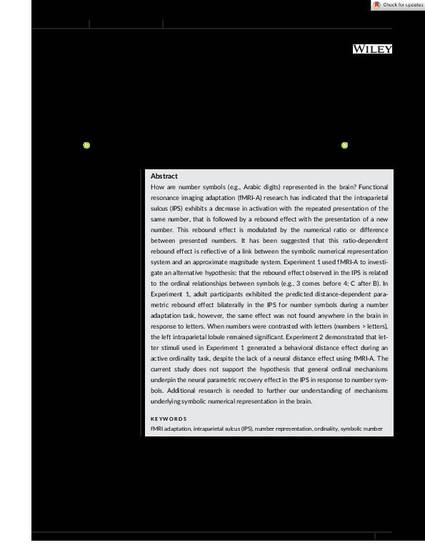
How are number symbols (e.g., Arabic digits) represented in the brain? Functional resonance imaging adaptation (fMRI-A) research has indicated that the intraparietal sulcus (IPS) exhibits a decrease in activation with the repeated presentation of the same number, that is followed by a rebound effect with the presentation of a new number. This rebound effect is modulated by the numerical ratio or difference between presented numbers. It has been suggested that this ratio-dependent rebound effect is reflective of a link between the symbolic numerical representation system and an approximate magnitude system. Experiment 1 used fMRI-A to investigate an alternative hypothesis: that the rebound effect observed in the IPS is related to the ordinal relationships between symbols (e.g., 3 comes before 4; C after B). In Experiment 1, adult participants exhibited the predicted distance-dependent parametric rebound effect bilaterally in the IPS for number symbols during a number adaptation task, however, the same effect was not found anywhere in the brain in response to letters. When numbers were contrasted with letters (numbers > letters), the left intraparietal lobule remained significant. Experiment 2 demonstrated that letter stimuli used in Experiment 1 generated a behavioral distance effect during an active ordinality task, despite the lack of a neural distance effect using fMRI-A. The current study does not support the hypothesis that general ordinal mechanisms underpin the neural parametric recovery effect in the IPS in response to number symbols. Additional research is needed to further our understanding of mechanisms underlying symbolic numerical representation in the brain.
